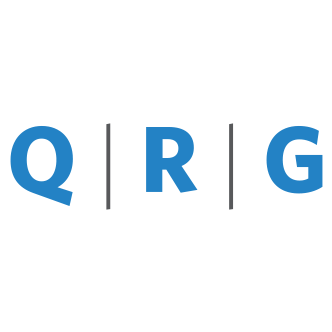Over the past three years, Envestnet's Quantitative Portfolios (QPs) offering has grown by 40 percent annually in accounts and advisors. According to Cerulli, total direct index industry assets were $434 billion at the end of 2022, and they expect direct index assets to grow at a 12% clip over the next four years – outpacing the growth of mutual funds and ETFs over that same period.1 In this blog series, industry experts from our quantitative asset management unit, QRG Capital Management, Inc., will share insights designed to help advisors customize their clients’ portfolios to meet a variety of needs.
There are several types of direct indexing strategies that have become popular. In this post, we’ll take a closer look at the three approaches we see the most often: Beta, factor-based, and fixed income. For a refresher on what direct indexing actually entails, read Direct Indexing 101.
Beta direct indexing
Beta direct indexing is one of the easiest strategies to understand. Essentially, it allows you to passively track an index while customizing it to fit your specific investment goals or preferences. This strategy aims to mirror the performance of the underlying index as closely as possible, without necessarily trying to exceed it. The main advantage of beta direct indexing is that it can closely replicate the index's performance and risk characteristics while offering customization options that standard index funds and ETFs do not.
For instance, an investor might want to replicate the S&P 500 but exclude certain companies based on personal beliefs and also engage in tax-loss harvesting. It's important to remember that while customization can slightly alter the index's performance, the primary objective is still to track the index closely. Deviations from the index's performance may occur, whether due to intentional customization or individual security risk.
Factor-based direct indexing
While beta direct indexing seeks to replicate an index's performance, factor-based direct indexing aims to outperform or achieve specific risk-return characteristics by emphasizing certain prominent asset pricing factors— momentum, value, quality, and low volatility. This strategy involves selecting and weighting stocks based on specific factors rather than simply mirroring the index. For example, an investor might overweight stocks with high value scores or strong momentum, while underweighting or excluding others. Combining multiple factor exposures in a multi-factor implementation such as value, momentum, and quality, is a common way to potentially achieve superior risk-adjusted returns.
The strategy is often referred to as “quantitative active,” as it strives to generate portfolio excess return relative to the benchmark index, driven by these factor tilts. While beta might still be considered, the main emphasis is on achieving specific factor exposures to potentially enhance returns or manage risk.
An example of factor-based direct indexing might be an investor who understands how difficult it is for traditional large cap core managers to outperform the benchmark, and they would prefer the transparent, systematic approach of factor-based investing to potentially attaining excess return over time. They might invest in a large cap multi-factor portfolio with enhanced exposures to the value, momentum, and quality factors, while still customizing for tax efficiency and personal preferences. Both strategies allow for customization, but factor-based direct indexing typically involves a more active selection process and might result in a portfolio that looks quite different from the benchmark index.
Fixed income direct indexing
Bond ladders and strategies tracking fixed income indices are now considered to be part of the direct indexing universe and have become popular as interest rates have risen.
Focusing on one popular fixed income approach that is considered to be in the category of direct indexing, a bond ladder is an investment strategy that involves purchasing a series of bonds with different maturities. The idea is to have bonds maturing at regular intervals (e.g., every year or every few years), which allows the investor to reinvest the proceeds at prevailing interest rates. This can help manage interest rate risk and provide a steady income stream. And similar to equity direct indexing, bond ladders allow for customization. Investors can exclude certain types of bonds (e.g., those issued by companies in specific industries) or tilt their portfolios towards certain characteristics (e.g., higher credit quality or longer duration).
With interest rates rising, bond ladders have gained popularity for several reasons:
- Higher yields: Rising rates lead to higher yields on new bond issues, making fixed income investments more attractive.
- Inflation protection: Bond ladders can help protect against inflation by allowing investors to reinvest at higher rates as older bonds mature.
- Diversified exposure: Tracking fixed income indices provides broad exposure to the bond market, which can be particularly appealing in a rising rate environment where diversification can help manage risks.
The future of portfolio management
Direct indexing has evolved into a versatile and customizable approach to investing, catering to a wide range of investor needs. Whether through beta direct indexing, which seeks to passively track an index while offering personalization, factor-based direct indexing that emphasizes specific investment factors for potential outperformance, or fixed income direct indexing that adapts bond strategies to the rising interest rate environment, each method offers unique advantages. As interest in these strategies continues to grow, particularly with rising interest rates, they provide investors with tools to optimize portfolios according to their specific financial goals, risk tolerance, and personal values. As direct indexing continues to outpace traditional mutual funds and ETFs in growth, its role in modern portfolio management is set to become even more significant.
For more information about Envestnet's QPs, which are managed by the company's quantitative asset management unit, QRG Capital Management, Inc., please visit: envestnet.com/qrg.
